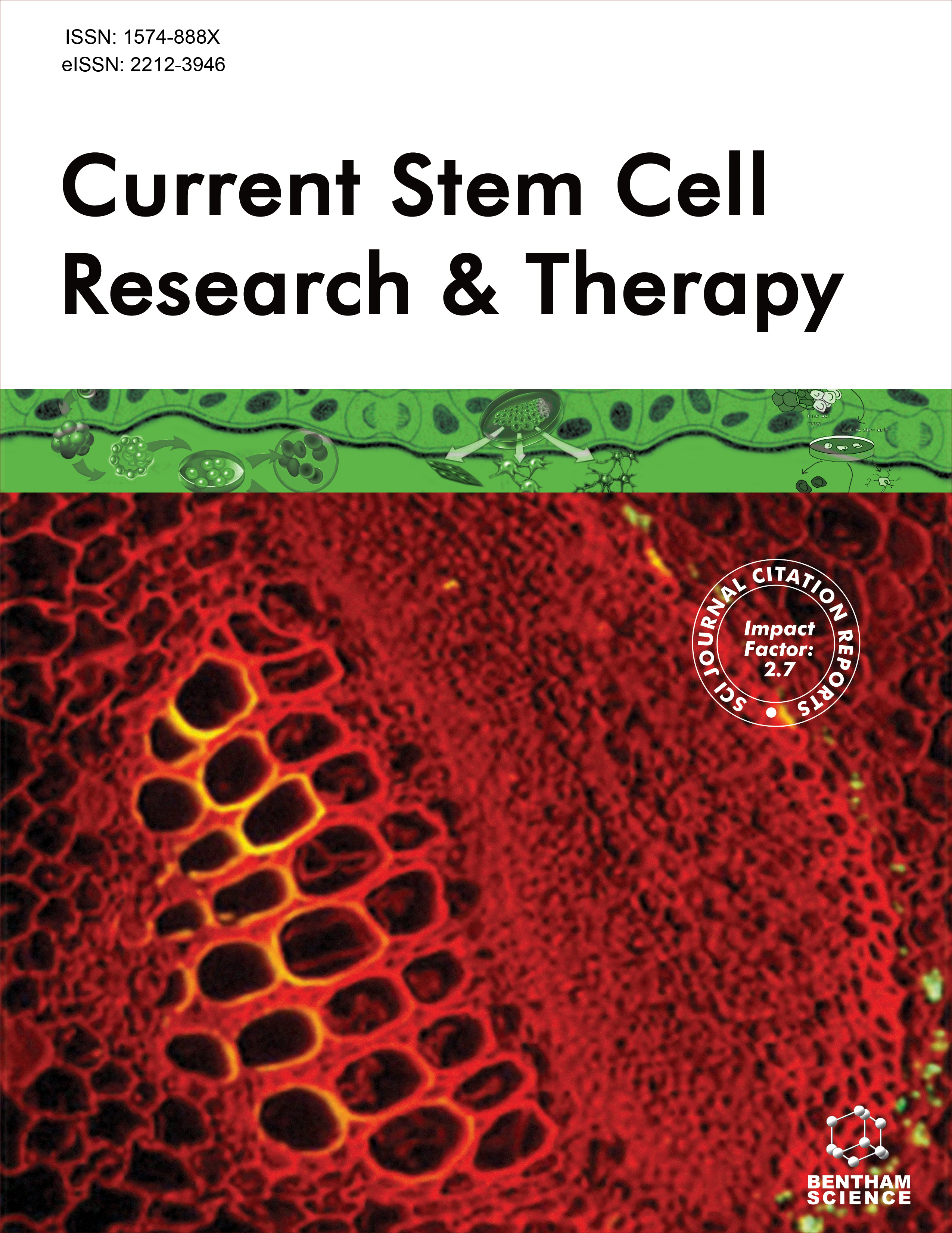- Home
- A-Z Publications
- Current Stem Cell Research & Therapy
- Previous Issues
- Volume 17, Issue 6, 2022
Current Stem Cell Research & Therapy - Volume 17, Issue 6, 2022
Volume 17, Issue 6, 2022
-
-
Gli1+ Mesenchymal Stem Cells in Bone and Teeth
More LessAuthors: Yange Wu, Xueman Zhou, Wenxiu Yuan, Jiaqi Liu, Wenke Yang, Yufan Zhu, Chengxinyue Ye, Xin Xiong, Qinlanhui Zhang, Jin Liu and Jun WangMesenchymal stem cells (MSCs) are remarkable and noteworthy. Identification of markers for MSCs enables the study of their niche in vivo. It has been identified that glioma-associated oncogene 1 positive (Gli1+) cells are mesenchymal stem cells supporting homeostasis and injury repair, especially in the skeletal system and teeth. This review outlines the role of Gli1+ cells as MSC subpopulation in both bones and teeth, sug Read More
-
-
-
Stem Cells in Tendon Regeneration and Factors governing Tenogenesis
More LessAuthors: Lingli Ding, BingYu Zhou, Yonghui Hou and Liangliang XuTendons are connective tissue structures of paramount importance to the human ability of locomotion. Tendinopathy and tendon rupture can be resistant to treatment and often recurs, thus resulting in a significant health problem with a relevant social impact worldwide. Unfortunately, existing treatment approaches are suboptimal. A better understanding of the basic biology of tendons may provide a better way to solv Read More
-
-
-
Natural Killer Cell-targeted Immunotherapy for Cancer
More LessAuthors: Jingyi Tang, Qi Zhu, Zhaoyang Li, Jiahui Yang and Yu LaiNatural Killer (NK) cells were initially described in the early 1970s as major histocompatibility complex unrestricted killers due to their ability to spontaneously kill certain tumor cells. In the past decade, the field of NK cell-based treatment has been accelerating exponentially, holding a dominant position in cancer immunotherapy innovation. Generally, research on NK cell-mediated antitumor therapies can be categorize Read More
-
-
-
Stem Cells from Human Exfoliated Deciduous Teeth and their Promise as Preventive and Therapeutic Strategies for Neurological Diseases and Injuries
More LessAuthors: Lingyi Huang, Zizhuo Zheng, Ding Bai and Xianglong HanStem cells from human exfoliated deciduous teeth (SHEDs) are relatively easy to isolate from exfoliated deciduous teeth, which are obtained via dental therapy as biological waste. SHEDs originate from the embryonic neural crest, and therefore, have considerable potential for neurogenic differentiation. Currently, an increasing amount of research is focused on the therapeutic applications of SHEDs in neurological diseases Read More
-
-
-
Periodontal Ligament Stem Cell Isolation Protocol: A Systematic Review
More LessAuthors: Maryam R. Rad, Fazele Atarbashi-Moghadam, Pouya Khodayari and Soran SijanivandiDespite the plethora of literature regarding isolation and characterization of periodontal ligament stem cells (PDLSCs), due to the existence of controversies in the results, in this comprehensive review, we aimed to summarize and compare the effect of isolation methods on PDLSC properties, including clonogenicity, viability/proliferation, markers expression, cell morphology, differentiation, and regeneration. Moreov Read More
-
-
-
Human Umbilical Cord Mesenchymal Stem Cells Promote Macrophage PD-L1 Expression and Attenuate Acute Lung Injury in Mice
More LessAuthors: Chengshu Tu, Zhangfan Wang, E. Xiang, Quan Zhang, Yaqi Zhang, Ping Wu, Changyong Li and Dongcheng WuBackground: Acute lung injury (ALI)/acute respiratory distress syndrome (ARDS) remains a serious clinical problem but has no approved pharmacotherapy. Mesenchymal stem cells (MSCs) represent an attractive therapeutic tool for tissue damage and inflammation owing to their unique immunomodulatory properties. The present study aims to explore the therapeutic effect and underlying mechanisms of human u Read More
-
-
-
A Comparative Analysis of Ascorbic Acid-induced Cytotoxicity and Differentiation between SHED and DPSC
More LessAim: The aim of this study was to compare dental pulp tissue in human exfoliated deciduous teeth (SHEDs) and dental pulp stem cells (DPSCs) in response to ascorbic acid as the sole osteoblast inducer. Background: A cocktail of ascorbic acid, β-glycerophosphate, and dexamethasone has been widely used to induce osteoblast differentiation. However, under certain conditions, β-glycerophosphate and dexamethasone can c Read More
-
Volumes & issues
-
Volume 20 (2025)
-
Volume 19 (2024)
-
Volume 18 (2023)
-
Volume 17 (2022)
-
Volume 16 (2021)
-
Volume 15 (2020)
-
Volume 14 (2019)
-
Volume 13 (2018)
-
Volume 12 (2017)
-
Volume 11 (2016)
-
Volume 10 (2015)
-
Volume 9 (2014)
-
Volume 8 (2013)
-
Volume 7 (2012)
-
Volume 6 (2011)
-
Volume 5 (2010)
-
Volume 4 (2009)
-
Volume 3 (2008)
-
Volume 2 (2007)
-
Volume 1 (2006)
Most Read This Month
Article
content/journals/cscr
Journal
10
5
false
en


